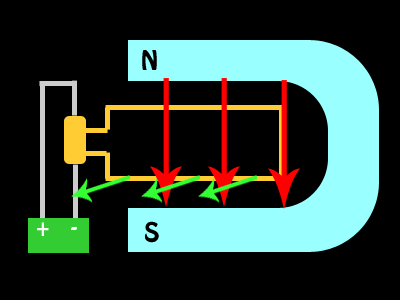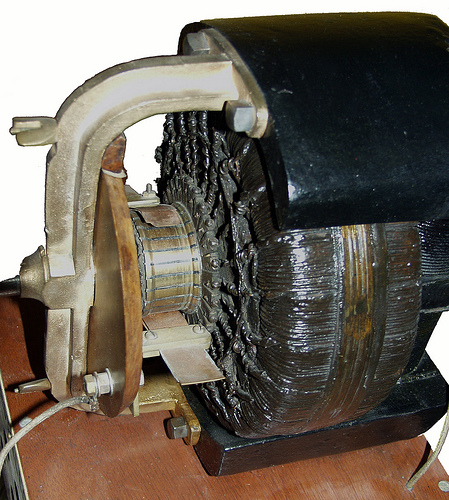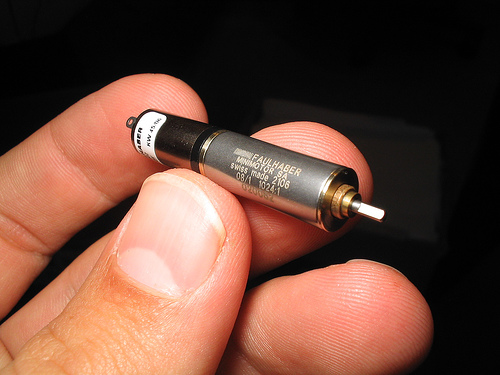 A motor uses a combination of electricity and magnetism to produce a force to run a machine. In Unit 4 you learned that a changing magnetic field produces an electric current. Electric generators produce electricity by spinning huge magnets inside coils of wire in a turbine. If the process is reversed, an electric current can produce a force on a magnet and cause it to move. If the magnet is inside a coil of wire and attached to an axle, the axle will turn when electric charges move inside the wire. View an animation of a motor at How Stuff Works: Electric Motor.
A motor uses a combination of electricity and magnetism to produce a force to run a machine. In Unit 4 you learned that a changing magnetic field produces an electric current. Electric generators produce electricity by spinning huge magnets inside coils of wire in a turbine. If the process is reversed, an electric current can produce a force on a magnet and cause it to move. If the magnet is inside a coil of wire and attached to an axle, the axle will turn when electric charges move inside the wire. View an animation of a motor at How Stuff Works: Electric Motor.
A more efficient motor can be made by placing the coil of wire inside a magnet and running the electric current through the coil. The magnetic field will push on the coil of wire and cause it to move. By attaching the coil of wire to an axle, the motor can be used to turn a wheel and power a car.
This is a drawing of a simple electric motor. Notice the wire loop inside the magnetic field. A battery is used to supply the electric current inside the wire loop which then turns inside the magnetic field.

Electric motors come in all shapes and sizes. Here are some pictures of electric motors.
This is a typical motor used in machine shops. Notice the many coils of wire which rotate inside the permanent magnets.

Image courtesy of flickr user cstmweb. This image is protected by a Creative Commons Attribution 2.0 Generic license.
Motors can also be made very small. This motor is the size used in toys and small appliances like electric toothbrushes and hair dryers.

Image courtesy of flickr user supernerdz. This image is protected by a Creative Commons Attribution-Noncommercial-Share Alike 2.0 Generic license.
There are two other basic forces in nature. The strong and weak nuclear forces are found within the atom. We will learn more about these forces when we study nuclear radiation in unit 11.
